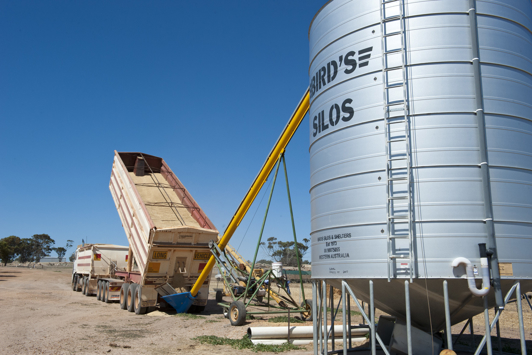The feed cost calculator is used to determine the lowest cost and feed value of a chosen mix of sheep feeds. Lowest cost and feed value is defined in terms of energy and protein, and cost per tonne, per megajoule of energy and per kilogram of protein.
Feed name
Use the drop-down boxes to enter the feed name to be used. If using a mix, select the first feed in Feed 1, select the second feed in Feed 2, and select the third feed in Feed 3.
Cost on farm
Enter the cost of each selected feed in $ per tonne ($/t). This will be used to calculate the cost of energy and protein for the feed mix.
Dry matter
Dry matter (DM) is the dry matter percentage of the feed. Leave this box empty if you want to use the default value for the feed. Silage has no default values due to its extremely variable quality and moisture levels. We recommend you have your feeds tested, as many vary depending on harvest conditions and season. If you have feed test results, enter the details by overtyping the default value.
Energy
This is the energy the feed contributed in megajoules per kilogram of dry matter (MJ/kg DM). Leave this box empty if you want to use the default value for the feed. We recommend you have your feeds tested as many vary depending on harvest conditions and season. If you have feed test results, enter the details by overtyping the default value. Silage has no default values due to its extremely variable quality and moisture levels.
Crude protein
This is the percentage of crude protein in the feed selected. Leave this box empty if you want to use the default value for the feed. If you have feed test results, enter the details by overtyping the default value. Silage has no default values due to its extremely variable quality and moisture levels.
Mix ratio
If selecting only one feed, enter 100%, ensuring no details have been entered in Feed 2 or Feed 3. If selecting a mix, enter the ratio (by weight) for each feed, ensuring the mix adds up to 100%.
Results
The results are presented ‘as fed’, which is the actual weight of the feed in the silo. Because all feed has some moisture content, the calculator uses dry matter percentage to calculate the amount that needs to be weighed out for feeding. This is important when feeding silage, because moisture content is extremely variable.
Refer to the Supplementary feed calculator for requirements for pregnant and lactating ewes and to the Supplementary Feeding page for details on rations and other important advice.
The composition and cost of feed mix components boxes show the feed quality and costs associated with the feed mix you selected.
You need to select more than one feed to set the feed mix. If you selected 100% in Feed 1, no results will show in the feed mix result boxes. Choose a ratio of feed (on a weight basis) for the feeds you require. The results will show the protein and energy levels of the mix and associated costs.
| Energy: | MJ/t 'as fed' |
| Energy Cost: | $ /MJ 'as fed' |
| Protein: | % 'as fed' |
| Protein Cost: | $ /kg |
| Energy: | MJ/t 'as fed' |
| Energy Cost: | $ /MJ 'as fed' |
| Protein: | % 'as fed' |
| Protein Cost: | $ /kg |
| Energy: | MJ/t 'as fed' |
| Energy Cost: | $ /MJ 'as fed' |
| Protein: | % 'as fed' |
| Protein Cost: | $ /kg |
Composition and Cost of Feed Mix
Results
| Energy (MJ/kg) as fed: | 0 MJ/kg |
| Energy (MJ/t DM): | 0 MJ/t DM |
| Protein % as fed: | 0 % |
| Energy ($/MJ DM): | 0 $/MJ DM |
| Dry Matter of mix (%): | 0 % |
| Total Cost ($/T): | 0.00 $/T |
|
Not all costs are included as data missing
|
|
| Protein ($/kg protein): | |
Contact us
Supplementary feeding calculator for pregnant and lactating ewes
Use this to calculate the supplementary feed required when green feed availability is low.
Go to calculator
